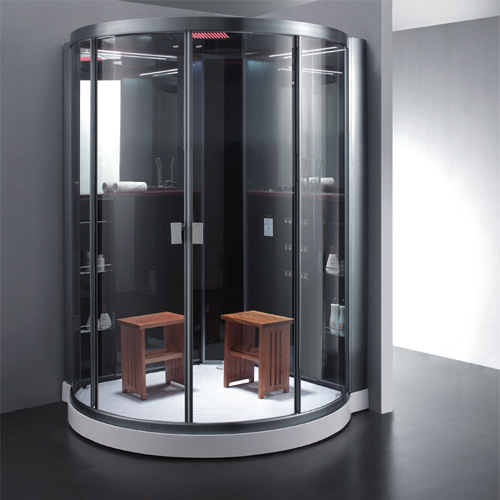
Converting a bathtub into a shower is not as difficult as you may think. If you don’t use your bathtub for bathing, why not convert your old bathtub into a walk in shower? Here are 3 tips on converting a tub to a shower.

Determine Spacing & Placement
A bathtub to shower conversion is easiest when you situate your new open shower in the space left behind by your bathtub, since your drain lines and water supply will already be in place. Moving plumbing can add significant cost to the project, plus require bringing in a plumber.
Spacing Required for a Walk In Shower:
- At least 30 inches by 30 inches of floor space.
- At least 80 inches in height.
- At least 15 inches between the side of the toilet and the shower wall.
- Or at least 21 inches between the front of the toilet and the shower wall.
- If you plan to install a swinging door, make sure to account for the swing. Source: BudgetDumpster
Waterproofing and Drainage
Properly sealing the shower floor from water leaks will help protect your home from problems associated with water leaks, like wood rot, drywall damage and mold. Hot mops are prepared onsite and are the best way to waterproof the shower pan.
A standard drain may not be sufficient to stand the test of time. To ensure your shower remodel lasts for many years, select a high quality and durable drain. Source: Angieslist
Which Type of Shower Works Best for Your Space?
Now that you have some ideas about what you want your shower to look like, you’ll want to consider the best type of shower to install in your bathroom.
Shower stalls
All-in-one shower stalls that can be added to an existing tub-sized space can make your job easier. Many options exist with built-in ledges and shelving; some even have seating areas. The stalls typically include a curb to contain water and the option of installing any type of door you wish — or even just using a curtain.
Tiled shower curbs
A tiled shower created in the existing wall space usually necessitates a curb or ledge that will hold the door and keep the water inside the shower. The curb should be tall enough to contain moisture and short enough to step over easily. Curbs should also be polished and have smooth edges to reduce injury.
Curbless showers
Showers with no lip to contain the water make it much easier to access the shower, especially for the elderly or disabled. But beyond that, curbless showers offer a particular open look that is appealing and modern. The curbless style can also save you a little space if you’re making the most of a small area.
The issue with a curbless shower, of course, is the difficulty of containing the water. This problem can be minimized by choosing a shower screen — essentially, a pivoting glass door — and a directed showerhead that keeps the flow of water moving away from the rest of the bathroom. Source: HomeAdvisor
Contact:
Perfect Bath
Phone: Toll Free 1-866-843-1641
Calgary, Alberta
Email: info@perfectbath.com







